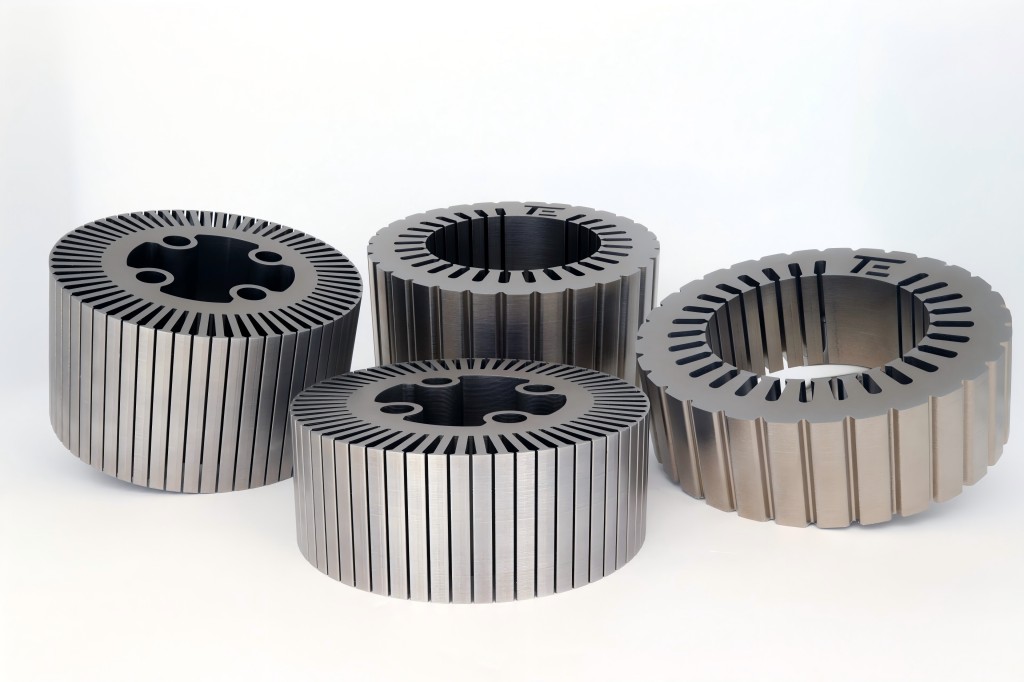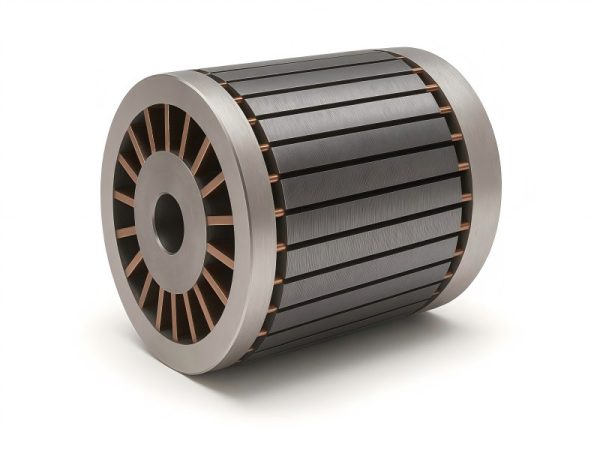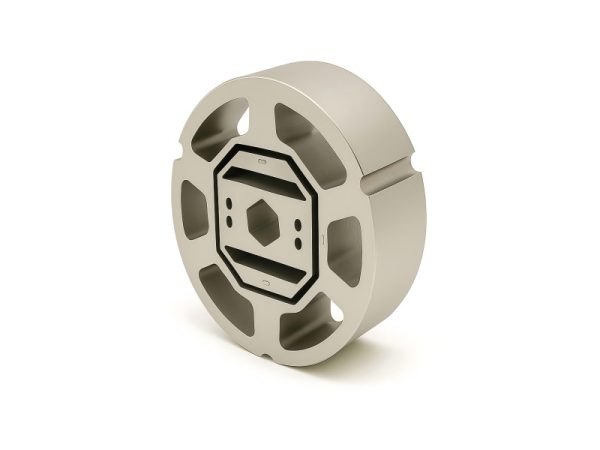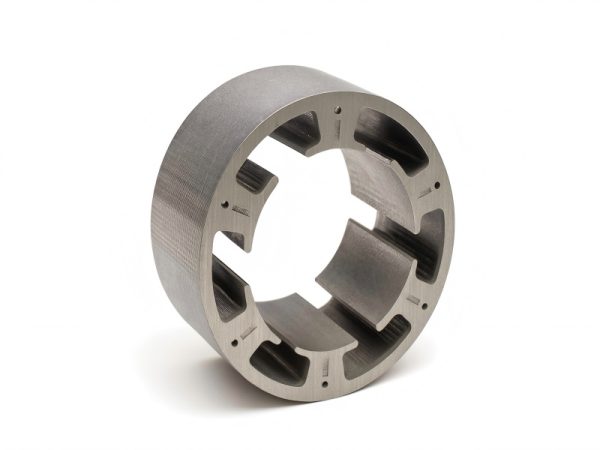Everything from industrial gear to electric cars and home gadgets is powered by electric motors. At their core are two essential components: the stator and rotor. Each plays a unique role even though they collaborate to transform electrical energy into mechanical power.
Understanding their functions and differences is key to optimizing motor performance and efficiency. This article explores the functions, design, and applications of both components.
What Are Stators and Rotors?
An electric motor is generally made up of two main parts: the stator and the rotor. These parts work in tandem to produce rotational motion, but each performs a specific function in the motor’s operation.
- Stator: When an electrical current flows through the stator’s windings, the motor’s stationary stator creates a magnetic field. It remains fixed in place and surrounds the rotor.
- Rotor: The rotor, conversely, is the motor’s rotating element. It works in tandem with the magnetic field from the stator, converting electrical energy into mechanical motion through its rotation.
Though these components are essential to the functioning of any electric motor, they each serve specific purposes that contribute to the overall efficiency and power output of the motor.
Key Functions of the Motor Stator
The stator is crucial for establishing the magnetic field required for the motor’s operation. Made of steel laminations, it is typically wound with copper or aluminum wire to form electromagnets that produce a magnetic field when energized.
Main Functions of the Stator:
- Magnetic Field Generation: The stator is energized by an alternating current (AC) or direct current (DC) to generate a magnetic field. This magnetic field is what drives the rotor to turn. Without the stator’s magnetic field, there would be no rotational motion.
- Control and Regulation: The stator works in conjunction with motor control systems, such as inverters and sensors, to regulate the speed, torque, and efficiency of the motor. In modern electric motors, the stator’s design is optimized for specific control methods, such as variable speed drives and servo control.
- Heat Dissipation and Cooling: As the stator is energized, it generates heat. To prevent overheating, many stators are designed with cooling mechanisms, such as air or liquid cooling, to maintain optimal operating temperatures.
- Mechanical Support: The stator provides the structural integrity needed to hold the rotor in place, ensuring smooth and stable operation. Its fixed position ensures that the rotor has enough clearance to rotate freely within it.
- Power Conversion Efficiency: By using high-quality materials like silicon steel for its core and copper for its windings, the stator minimizes energy loss and enhances the overall efficiency of the motor. This is especially crucial for motors used in high-performance applications, such as electric cars (EVs).
Key Functions of the Motor Rotor
The motor’s dynamic component, the rotor, transforms the stator’s magnetic field energy into mechanical motion. It rotates within the stator’s magnetic field, turning electrical energy into useful work. While it is crucial for motion, its design and construction can vary significantly based on the motor type and application.
Main Functions of the Rotor:
- Converting Electrical Energy into Mechanical Motion: The rotor works with the stator’s magnetic field to create rotational movement. This movement can power mechanical devices like fans, pumps, conveyors, and vehicle wheels.
- Torque and Speed Control: The rotor plays a key role in controlling the motor’s torque and speed. Depending on the rotor’s design, such as in squirrel-cage or wound rotors, the motor can offer different performance characteristics, including higher starting torque or better speed regulation.
- Supporting Load Transfer: The rotor provides the mechanical energy needed to drive external loads. In electric vehicles, for example, the rotor’s rotation is directly connected to the vehicle’s wheels, driving motion.
- Stability and Rotational Balance: To reduce vibrations and guarantee smooth operation, the rotor needs to be precisely balanced. Inefficiencies, increased wear, and possible motor damage can result from any rotor unbalance.
- Efficiency in Power Conversion: Rotor designs that reduce losses, such as low-resistance bars or windings, help to improve the overall efficiency of the motor. These designs allow for better energy conversion and less heat generation, which improves the motor’s operational lifespan.

Differences Between Stator and Rotor
While both the stator and rotor are essential for electric motor function, their differences are significant in terms of structure, design, and function. The comparative chart that follows highlights the main distinctions between the two parts:
Table: Differences Between Motor Stator and Rotor
| Feature | Stator | Rotor |
| Position | Stationary (fixed) part of the motor | Rotating component within the stator |
| Function | Generates the magnetic field | Converts the magnetic field into mechanical motion |
| Materials | Laminated steel core, copper or aluminum windings | Laminated steel, copper or aluminum bars/windings |
| Motion | Does not rotate | Rotates within the stator’s magnetic field |
| Heat Generation | Produces heat, but mostly dissipates it. | Generates a lot of heat because of electrical losses and friction. |
| Power Source | Receives electrical power from the source | Induces electrical current or receives power from the stator |
| Common Types | Slotted, slotless, concentrated winding | Squirrel cage, wound rotor, permanent magnet |
| Cooling Mechanism | Often includes air or liquid cooling systems | May require cooling in high-power applications |
| Purpose in Motor | Controls motor operation and efficiency | Determines motor torque, speed, and load transfer |
These key differences determine how each component affects motor performance. The stator is focused on creating the magnetic field and controlling energy input, while the rotor is focused on converting that energy into useful mechanical motion.
Types of Stators and Rotors
Types of Stators:
- Slotted Stators: These are the most common type of stator, where the coils are placed in slots in the core to generate the magnetic field.
- Slotless Stators: In these stators, the windings are placed in a way that eliminates the use of physical slots, reducing magnetic losses and improving efficiency.
Concentrated Winding Stators: Common in brushless DC motors, these stators use concentrated windings that are wound around a limited number of poles for high torque.
Types of Rotors:
- Squirrel Cage Rotor: A widely used rotor type in induction motors, consisting of a series of conductive bars shorted together at the ends, forming a closed loop.
- Wound Rotor: Common in slip-ring motors, the wound rotor has windings that are connected to external circuits through brushes and slip rings, allowing for variable resistance control.
- Permanent Magnet Rotor: Used in permanent magnet motors, the rotor is magnetized permanently, improving efficiency by eliminating the need for external power sources to generate a magnetic field.
Applications in Various Industries
Stators and rotors are critical components in various applications across many industries. Below are some common industries where motor stators and rotors play a key role:
Automotive Industry:
- Electric Vehicles (EVs): High-performance stators and rotors drive the motors that power electric vehicles, offering efficient energy conversion and torque control.
- Hybrid Vehicles: Hybrid motors often use specialized rotors to balance the transition between electric and combustion engine power.
Industrial Automation:
- Robotics: Precise motor control through optimized stators and rotors is crucial for robotics applications that require fine-tuned movement and torque.
- Machinery: Motors used in CNC machines, conveyors, and industrial automation systems rely on high-efficiency rotors and stators.
Renewable Energy:
- Wind Turbines: The stator and rotor are the key components in converting wind energy into electrical power in wind turbines.
- Solar Power Systems: In solar-powered pumps or motors, the stator and rotor enable reliable operation in renewable energy systems.
Consumer Electronics:
- Home Appliances: Fans, refrigerators, and washing machines all rely on efficient stator and rotor systems to reduce power consumption and improve performance.
Conclusion
Understanding the roles of stators and rotors is key to optimizing motor designs for efficiency, durability, and performance. The stator generates the magnetic field and controls power, while the rotor converts energy into mechanical motion. Their interdependent functions drive advancements in motor technology across automotive, industrial, and renewable energy sectors, fueling the continued evolution of electric motors.

